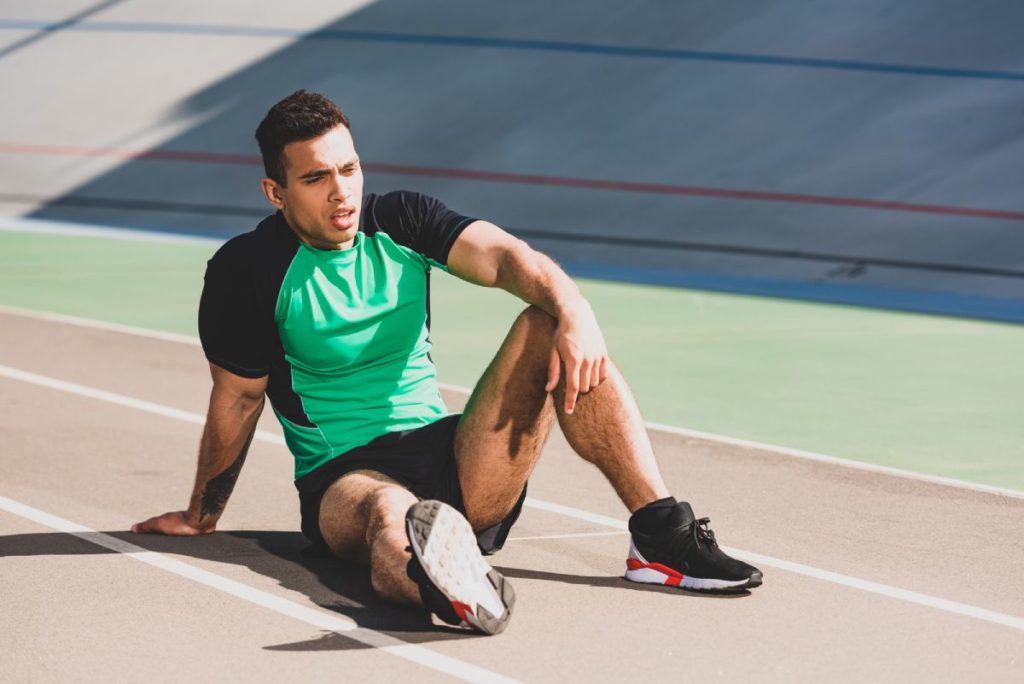How do runners recover? If you’re running every day or training for a marathon, you need to have a targeted recovery plan in place.
After a long run, how you wind down is equally important as how you warm up. When you exercise vigorously, glycogen is depleted because it’s stored for quick energy in your muscles, exercise also breaks down your muscle fibers, and you can get tired all over again. Fortunately, you can do things to make sure you recover properly after a run, like stretching, eating well, doing some light exercise, and more.
Developing a good practice for treating your body correctly after exercise can help to increase your performance and also prevent injuries.
You might also find our guide on how do runners prevent chaffing useful.
7 Recovery Practices After Long Runs or Races
1. Start Recovery Before You Even Start Running

Prior to your run, be sure to do proper stretching. It can make all the difference in the success of your run and, more importantly, in your recovery following your run.
Before I ever hit the track or route, I do dynamic stretches such as butt kicks, walking lunges, high knees, torso twists, and leg swings.
2. Stretch
You did your stretches before your run, but it’s just as important to do stretches after you finish your race. For this, you can do static stretching.
Try holding your stretches for 10-30 seconds. You can also do things such as standing quad stretches and toe touches.
3. Cool Down After Your Runs
After your run, walking for half a mile or even about 10 minutes is a great cool-down. This will help your body return to its normal status, and it will also help your body to redistribute blood flow, lower breathing and heart rate slowly, allow your body’s temperature to get lower, and flush out metabolic waste products.
4. Light Exercise The Next Day
On the day following your race, consider a casual half-hour walk, yoga, or even light stretching. All of these things will help with recovery and blood flow.
5. Use Foam Rollers For Muscle Soreness
One way to help ease muscle aches is to use a foam roller. This is an excellent tool that you can use both before you run and afterward. Foam rollers are a great way to self-massage, and your legs will thank you.
6. Eat & Drink Well

One of the most important things you can do to jump-start your recovery is to plan your post-run nutrition. After running, many of us wait a couple of hours before we eat, but the best time to eat following a run is within 30 minutes after running.
Your body will be eager to rebuild, and it needs proper nutrition. If you’re not hungry after a run, consider a smoothie or a protein shake. You need carbs and protein; another option is fruit with Greek yogurt.
Most importantly, drink plenty of water following your run, and get those electrolytes into your body.
Check out our guide on how do runners treat blisters.
7. Get Into Some Dry Clothing
Your clothing will be wet after your run, so you need to change as soon as possible. When you put on dry clothing, you’ll keep your muscles nice and warm. This will promote circulation, which will aid in your recovery.
If you like running, you might be interested in our explainer on is barefoot running healthy?
FAQs About How Runners Recover
How Long Does It Take To Recover From A Run?
If you have run a marathon or even a half marathon, you can expect that your body will need at least 36 to 48 hours to reboot fully. Without this recovery period, your body doesn’t have a chance to strengthen and rebuild muscles. Instead, it will just continue breaking down.
What Should I Avoid After Running?
Here are a few things to avoid doing after a long run:
1. Skipping cooling down
2. Failing to refill your body’s glycogen stores
3. Getting dehydrated
4. Overeating or eating unhealthy foods and beverages
5. Overdoing it and not resting
How Many Rest Days Should A Runner Have?
You should plan on resting for one or two days after a long run.
What Is The Best Recovery Drink After Running?
The best thing you can do for yourself after a run is to hydrate with an electrolyte drink or Gatorade.



